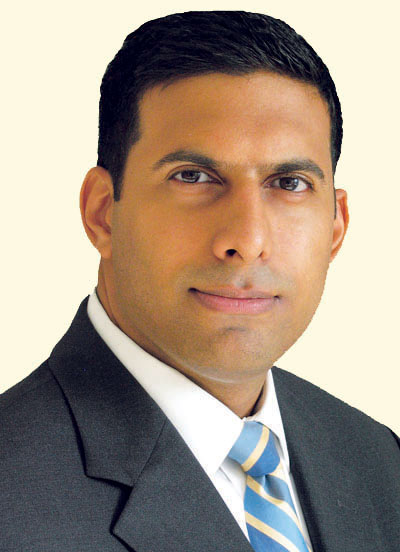It’s been clear since long before the Great Recession that something is amiss in the labor market. Unbeknownst to the most recent crop of college graduates, this is not our first “jobless recovery.” That term was introduced to the popular lexicon in the early 1990s. It was revived in 2003; more than a year into that recovery, the turnaround in employment had never been weaker. In retrospect, those were halcyon days when compared with our current run.
What’s gone wrong?
 The output of research seeking to answer this question has been prodigious, even if the policy steps have been insubstantial. It could be a simple but severe demand shock. But if not, the structural arguments point to several possibilities. In an economy with rapidly changing technology, a larger share of job losses is permanent. New jobs are in industries that require different skills or are in different locations. Unless the work force is mobile and nimble in retooling, a spatial and skills gap emerges between the skills we need and the ones we have in ample supply. The cyclical housing downturn temporarily exacerbates the mobility challenge by constraining movement in the labor supply across occupations. Directly and indirectly, all of this contributes to higher structural unemployment.
The output of research seeking to answer this question has been prodigious, even if the policy steps have been insubstantial. It could be a simple but severe demand shock. But if not, the structural arguments point to several possibilities. In an economy with rapidly changing technology, a larger share of job losses is permanent. New jobs are in industries that require different skills or are in different locations. Unless the work force is mobile and nimble in retooling, a spatial and skills gap emerges between the skills we need and the ones we have in ample supply. The cyclical housing downturn temporarily exacerbates the mobility challenge by constraining movement in the labor supply across occupations. Directly and indirectly, all of this contributes to higher structural unemployment.
As a confounding problem of the underlying skills mismatch, the duration of unemployment lengthens with the search process, making it difficult for the unemployed to re-engage with potential employers. The barriers to labor-force re-entry are not limited to the diminishing relevance of the job seeker’s skills. Even if a prospective employee is well qualified, a long period of unemployment is a negative signal in Akerlof’s market for lemons. In this scenario, our matching process exhibits market failures that may worsen as the search-and-filter technology improves.
The notion of matching inefficiency has gained new force with the last few years’ oft-observed and occasionally revised shift in the Beveridge curve, which measures the relationship between the job vacancy rate and the unemployment rate. The curve has moved in an unhappy direction (up and to the right), but it doesn’t itself explain the cause for its migration. Plenty of thought is going into causation; the IMF in a recent report found that the shift in the Beveridge curve is not at all limited to the United States.
When job openings rise and unemployment remains high, the standard interpretation is a skills gap. It must be that firms can’t find the people they need. Whether that interpretation is correct or just intuitive has significant implications for policy. If skills are the binding constraint on stronger hiring trends, monetary and fiscal policy will be blunted in their effectiveness. The jobs recovery will be frustratingly slow, even if interest rates fall to zero.
The story seems to fit the facts, but the skills mismatch isn’t the whole story. It might not even be the biggest part of the story. Even if it appeals to our intuition about a crumbling education system, researchers find limited evidence of a skills mismatch when they dig into the data. If one does exist, the Chicago Fed’s investigation shows it is most acute in the middle of the skills range.
A recent cut of the data from the Boston Fed shows that the Beveridge curve shift can be isolated to the long-term unemployed. For everyone else, matching efficiency appears unimpaired. This is an important observation that could reflect behavioral noise from extended unemployment benefits, though evidence of its magnitude is mixed.
Another possibility relates to search intensity by employers, who may be relatively unmotivated to increase labor after a prolonged period of paring. Even if jobs are available, the intensity of efforts to fill them is weak because the opportunity cost of leaving them open seems fairly low. Peter Cappelli of Wharton’s management department makes the strongest case yet that employer expectations and hiring practices contribute to the outcomes we observe today.
The biggest puzzle in all of this is the policy response. If there is an underlying structural problem that relates to the skills-readiness of the labor force—or even if it falls to the mixed efforts and incentives of employers and job seekers—the absence of a well-defined policy response to unsustainably high labor nonparticipation is baffling. Even if you believe this is all just the result of a demand shock, the duration of unemployment will make re-entry harder.
As the response to Friday’s employment report reinforced, we are fixated on the proximate observation and whether net new jobs are higher or lower than we had guessed. Policy tools are focused on driving aggregate demand, relying on the link between real activity and employment. Why the stability of that link appears tenuous begs for attention as well.
dsc@chandan.com
Sam Chandan, Ph.D., is president and chief economist of Chandan Economics and an adjunct professor at the Wharton School.


